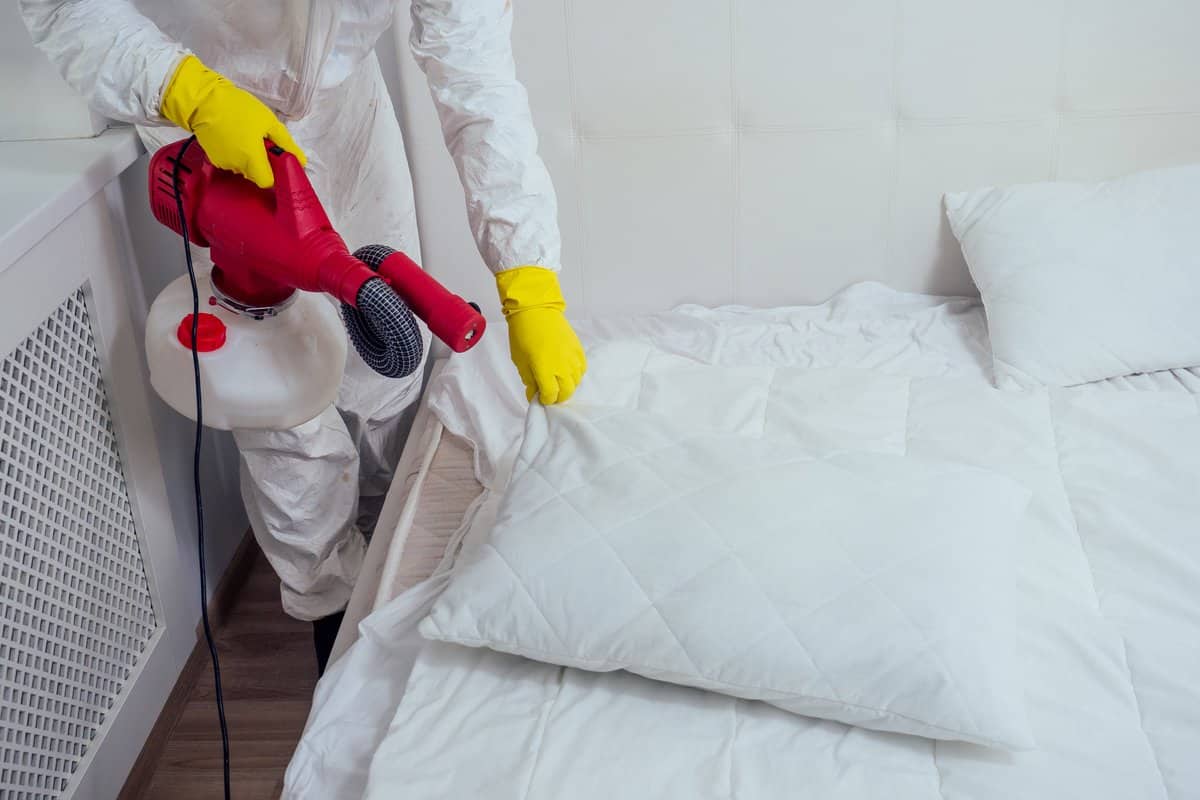Leading Kings Cincinnati Pest Control Services: Exterminator Proficiency
Wiki Article
Kinds of Insect Control: Which Approach Is Right for Your Problem?
When faced with a pest problem, the selection of a suitable approach for insect control is vital in successfully managing the situation. By discovering the different kinds of bug control methods available, individuals can make educated choices customized to their special scenarios, making sure a much more sustainable and efficient result in parasite eradication.Chemical Insect Control
Chemical pest control includes using synthetic or normally obtained chemicals to handle and remove pest populations effectively. This approach is commonly utilized in agriculture, forestry, and household setups to fight a variety of pests, including weeds, rats, and bugs. The use of chemical pesticides can give fast and targeted services to pest infestations, making it a preferred choice for several people and companies.One of the key benefits of chemical insect control is its capacity to swiftly remove bugs, reducing the threat of damage to plants, property, and human wellness. By utilizing details chemicals that target specific parasites, this technique can effectively regulate infestations while decreasing harm to advantageous microorganisms and the environment when used correctly.
However, using chemical pest control likewise increases worries concerning prospective negative effects on non-target types, water resources, and human health. It is critical to follow security standards, use chemicals responsibly, and take into consideration alternative bug control approaches to minimize these risks and make sure lasting bug monitoring practices.
Biological Insect Control
Organic bug control, also referred to as biocontrol, makes use of living microorganisms to decrease and handle pest populaces normally. This technique harnesses the power of nature to regulate pests without the need for synthetic chemicals. Biocontrol can include the introduction of natural opponents of the parasite varieties, such as predators, bloodsuckers, or pathogens, to suppress bug populations. By utilizing the insect's natural predators or virus, organic insect control uses a eco pleasant and sustainable service to pest administration.
Mechanical Bug Control
Using manual and physical approaches to manage bug populations, mechanical parasite control supplies a different method that does not depend on the usage of living organisms or artificial chemicals. This method entails making use of obstacles, catches, or various other devices to literally prevent or get rid of pests. By blocking bug entrance points or establishing traps to catch them, mechanical bug control can properly lower invasions without introducing chemicals into the environment.One usual example of mechanical bug control is using mesh screens on doors and windows to stop insects from going into buildings. This simple yet efficient method functions as a physical barrier, keeping bugs out while permitting appropriate air flow. In addition, gadgets like mousetraps, fly swatters, and ultrasonic repellents fall under the mechanical pest control classification.
While mechanical pest control techniques can be labor-intensive and require routine surveillance and upkeep, they supply a sustainable and eco-friendly solution for managing pest infestations. By integrating different mechanical techniques, building proprietors can create a comprehensive bug control strategy that reduces dependence on chemical pesticides.
Physical Insect Control

Some typical physical bug control methods consist of using obstacles such as displays or webs to avoid parasite access, catches to record and get rid of pests, and hand-picking to physically remove pests from plants or structures. Furthermore, methods like warm treatments can be utilized to control pests like bed bugs by raising the temperature to levels that are dangerous to the pests.
Physical parasite control is specifically useful in integrated pest monitoring (IPM) strategies, where numerous parasite control techniques are combined for effective pest monitoring while decreasing the usage of chemicals. By using physical insect control techniques, individuals can successfully deal with insect infestations with marginal ecological impact.
Integrated Pest Management
When implementing physical parasite control approaches as part of pest monitoring methods, Integrated Insect Management (IPM) becomes a thorough technique that leverages various strategies to successfully control pest populations. IPM focuses on long-lasting prevention of parasites with a mix of organic, cultural, physical, and chemical devices customized to particular parasite problems. By incorporating several control tactics, IPM aims to decrease the risks related to bugs while also minimizing reliance on chemical options.One secret aspect of IPM is the emphasis on surveillance and evaluating pest populaces to identify one of the most appropriate control techniques. This positive method allows for very early intervention and targeted techniques, leading to much more reliable insect monitoring. Additionally, IPM promotes eco-friendly practices by focusing on non-chemical control approaches and only utilizing pesticides as a last hotel.
Final Thought

By making use of imp source the insect's all-natural predators or virus, biological parasite control provides a lasting and environmentally pleasant solution to pest administration. - Kings cincinnati pest control companies
Using physical and hand-operated techniques to take care of pest populations, mechanical parasite control offers an alternate strategy that does not rely on the usage of living organisms or artificial chemicals.A reliable approach to handling bug populaces without relying on chemical or biological methods includes the usage of physical parasite control techniques.When executing physical parasite control techniques as component of parasite management methods, Integrated Parasite Management (IPM) emerges as an extensive technique that leverages numerous strategies to efficiently regulate pest populaces. Chemical pest control involves the use of pesticides, biological pest control utilizes all-natural predators, mechanical insect control includes physical barriers, physical insect control includes trapping or eliminating insects, and integrated parasite management combines multiple approaches for an their explanation all natural strategy to pest control.
Report this wiki page